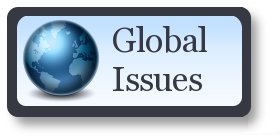 Global Youth Voices at the 10th Session of the Conference of the Parties (COP10) to the WHO Framework Convention on Tobacco Control (WHO FCTC). Credit: Global Center for Good Governance in Tobacco Control
Global Youth Voices at the 10th Session of the Conference of the Parties (COP10) to the WHO Framework Convention on Tobacco Control (WHO FCTC). Credit: Global Center for Good Governance in Tobacco ControlSTOCKHOLM / BANGKOK, May 28 (IPS) - The World Health Organization (WHO) for this year’s World No Tobacco Day (May 31) has chosen the theme, “Unmasking the Appeal”,?to reveal the tactics employed by the tobacco and nicotine industries to make their harmful products enticing, particularly to young people.
 Global Youth Voices at the 10th Session of the Conference of the Parties (COP10) to the WHO Framework Convention on Tobacco Control (WHO FCTC). Credit: Global Center for Good Governance in Tobacco ControlThe tobacco industry promotes the concept of harm reduction by shifting focus from traditional smoking to modern alternatives such as e-cigarettes, vaping pens, nicotine pouches, Electronic Nicotine Delivery Systems, heat-not-burn devices and other heated tobacco products.
The same tactics used decades ago to manipulate young people into smoking are now being rehashed to push these new products—often marketed under the guise of innovation or “safer” alternatives—to countries around the world. While the packaging and products may look new, the playbook remains the same: addict youth, expand markets, and shift the blame. And now, they’re calling it “harm reduction.”
Global Youth Voices at the 10th Session of the Conference of the Parties (COP10) to the WHO Framework Convention on Tobacco Control (WHO FCTC). Credit: Global Center for Good Governance in Tobacco ControlThe tobacco industry promotes the concept of harm reduction by shifting focus from traditional smoking to modern alternatives such as e-cigarettes, vaping pens, nicotine pouches, Electronic Nicotine Delivery Systems, heat-not-burn devices and other heated tobacco products.
The same tactics used decades ago to manipulate young people into smoking are now being rehashed to push these new products—often marketed under the guise of innovation or “safer” alternatives—to countries around the world. While the packaging and products may look new, the playbook remains the same: addict youth, expand markets, and shift the blame. And now, they’re calling it “harm reduction.”The Global Center for Good Governance in Tobacco Control (GGTC) estimates the tobacco industry costs the global economy a net loss of USD 1.4 trillion annually and kills more than 8 million people. Over 37 million teenagers aged 13-15 years use some form of tobacco. The tobacco industry's promotion of novel and emerging tobacco products as “harm reduction” has been firmly challenged by the Global Youth Voices (GYV), a global coalition of over 40 youth organizations advocating for a ban on these new recreational products. The youths also want the industry to be held financially accountable for harms caused to both current and future generations.
The GYV, in their 2024 Declaration, refused to accept compromised solutions that prioritize corporate profit over youth health. They have rejected the tobacco industry’s new so called “smoke-free products” and instead called for a ban on any new recreational and youth-appealing addictive products.
“The industry’s ‘harm reduction’ narrative is a smokescreen. These so-called alternatives are gateways to addiction, not exits. We must act before another generation is lost to nicotine dependence.” Against this backdrop, Swedish member of GYV, A Non Smoking Generation, are warning global public health community not to follow the Swedish experience of embracing oral nicotine pouches, snus, as a safer alternative to cigarettes. Snus and new nicotine products in Sweden have been touted by the tobacco industry as safer alternative to smoking. In reality, it is fueling a surge in nicotine addiction among Swedish youth. Tobacco and nicotine use among young people is higher than ever, alongside their exposure to aggressive marketing of and easy access to nicotine products.
 A Nicotine Pouch. Credit: A Non Smoking GenerationSweden is not a model to follow—it’s a warning. What’s happening there is spreading globally, and the cost will be another generation trapped in nicotine addiction.
According to Sweden´s public health agency, 11 percent of the population still smokes, while the use of e-cigarettes, snus and nicotine pouches is increasing dramatically - particularly among youth.
A Nicotine Pouch. Credit: A Non Smoking GenerationSweden is not a model to follow—it’s a warning. What’s happening there is spreading globally, and the cost will be another generation trapped in nicotine addiction.
According to Sweden´s public health agency, 11 percent of the population still smokes, while the use of e-cigarettes, snus and nicotine pouches is increasing dramatically - particularly among youth. A staggering 65 percent of high school students have tried at least one nicotine product, and smoking prevalence in this age group has increased from 17 to 21 percent in just three years. Swedish tobacco regulations have failed to protect children and youth from harmful nicotine addiction. When nicotine pouches and vapes entered the market, Sweden’s critical misstep was allowing them to bypass their tobacco legislation. As a logical step, these products should have been regulated as tobacco, since all commercial nicotine products, despite being labeled “tobacco-free,” still contain tobacco-derived nicotine.
This regulatory gap allowed the tobacco companies to circumvent current regulations, and lure youth through misleading social media promotions, including candy flavored, youth-appealing products.
Seven in ten Swedish youth state the fact that new nicotine products “seem less harmful” than traditional tobacco can be a reason to try these out. Nicotine is a poison and is addictive. Extensive use of nicotine involves a large number of scientifically proven and serious health risks such as cardiovascular disease, type 2 diabetes and birth defects. It can also quickly impair cognitive functions and increase the risk of mental illness. The false narrative from Sweden -- portrayal of vapes and pouches as harm reducing alternatives to cigarettes—is unfortunately spreading globally. The public awareness of all severe health risks associated with nicotine is alarmingly low, and risks having devastating consequences for public health. The Swedish government recently lowered the excise tax on snus, thereby increasing the risk of more young people initiating a harmful nicotine addiction. Nicotine pouches evade the excise tax on tobacco completely and can presently be sold at a price cheaper than ice cream.
This completely ignores WHO’s recommendation that taxation as the most effective way to reduce youth access to tobacco and a cost-effective tool to prevent subsequent substance abuse. Since the problem is created by an industry, the youth urge the Swedish government—and others watching Sweden’s model—to hold the tobacco industry financially liable for the harm it causes. This includes implementing taxes, levies, compensation mechanisms, sanctions, and other legislative tools to mitigate the damage. Countries that have legalized new tobacco and nicotine products are now grappling with a significant rise in youth vaping. But there is hope—over 40 countries have banned these products, including, most recently, Vietnam and Papua New Guinea, which have banned e-cigarettes. Contrary to the tobacco industry´s claims about snus, vapes and pouches as products for smoking cessation, independent research show that these products more often work as a gateway to smoking and higher intake of alcohol and drugs. To reduce and prevent all forms of nicotine addiction, including smoking, the scientific evidence supports strong, coherent national regulations of tobacco and nicotine products. Not because each product carries identical risks, but because every child and young person is entitled to the highest standard of health and a sustainable future. A Non-Smoking Generation, together with GYV youths call on government officials and policymakers to not repeat the Swedish misstep but to unmask and reject the tobacco industry’s tactics and false narratives. Helen Stjerna is Secretary-General, A Non Smoking Generation, Sweden; Rajika Mahajan is Communication Officer, Global Center for Good Governance in Tobacco Control & Convenor of the Global Youth Voices, Bangkok
IPS UN Bureau
Follow @IPSNewsUNBureau
Follow IPS News UN Bureau on Instagram
© Inter Press Service (2025) — All Rights Reserved. Original source: Inter Press Service

 1 month ago
20
1 month ago
20










 English (US) ·
English (US) ·